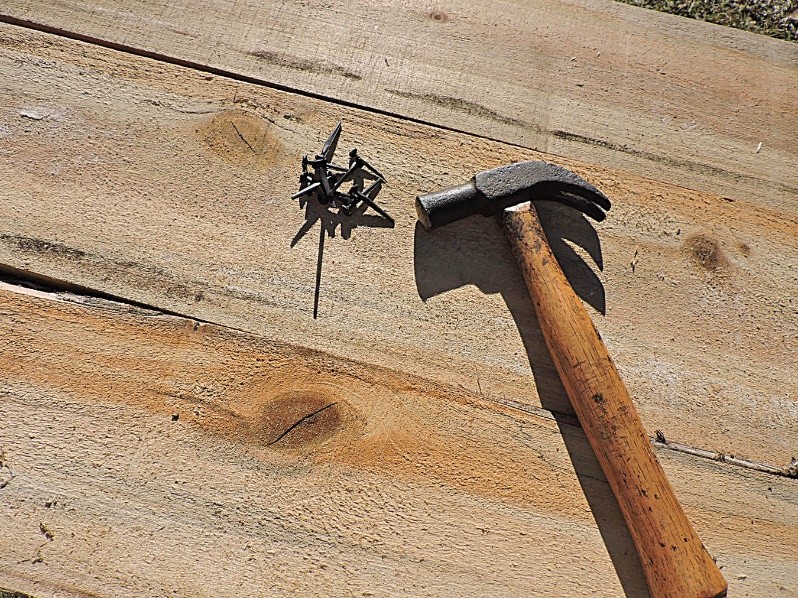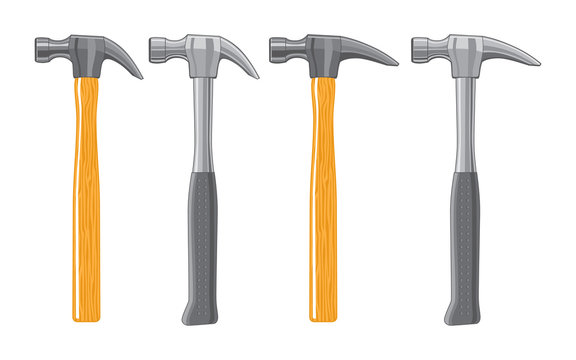

Dec. 05, 2022
Claw hammers can pull nails as well as hammer them. They are just as useful at home for DIY projects as they are on a construction site.
The claw hammer is not the only type. There are also lighter, claw-curved hammers for driving and pulling finishing nails; lighter hammers for detail work; and hammers with long noses for more precise hammering and pointed claws for digging out nail heads. The sheer variety is astonishing.
 A hammer, of course, consists of a heavy head attached to a handle. A claw hammer includes a forked nail-pulling tool at the back of the head.
A hammer, of course, consists of a heavy head attached to a handle. A claw hammer includes a forked nail-pulling tool at the back of the head.
Stone hammers existed three million years ago. But they lacked handles until about 30,000 B.C., and forged-metal hammer heads didn’t appear until the Bronze Age, about 3,300 B.C. Although there is evidence of claw hammers dating to 1514 A.D., American blacksmith David Maydole is generally credited with inventing the first one in 1840.
Maydole forged his hammers with heads tapered to the cheek, where the handle attaches. The design was so popular that Maypole’s shop expanded to keep up with demand. It’s the same design most manufacturers use today.
A claw hammer head is usually made of forged steel, although titanium heads are available. The face, shaped into a circular anvil about an inch in diameter, is primarily for driving nails. The claws can be straight or curved, flat or pointed. Although designed to pull nails, they also have other uses.
You can use a claw hammer for:
-Framing, installing roofing and siding and other heavy-duty construction.
-Installing and removing doors, windows and trim and other light-duty construction.
-Home utility purposes, such as hanging pictures, building fencing and driving stakes.
-Demolition.
-Digging small holes in the ground and even uprooting weeds.
Although the design is fairly standard, a number of variations make the tool better for some purposes than others.
 1.Utility hammer
1.Utility hammer
The hammer most people keep around the house. It weighs about 16 ounces or lighter and with an elongated neck. The extreme curve of the claws provide optimum leverage for pulling nails. The handle may be made of steel, fiberglass, or a hardwood such as hickory or ash.
2.Framing hammer
Framing hammers — AKA rip claw hammers — are heavier than utility hammers (from 20 to 24 ounces) and tend to have larger faces that may be serrated or smooth. The faces on some feature short necks for pounding accuracy. The claws are typically straight. The handle, which supplies leverage for pulling nails, is longer than a utility hammer and made of metal, fiberglass or wood.
3.Electrician's hammer
An electrician’s hammer has straight claws like a framing hammer, but it’s a little lighter (about 18 ounces) with a long neck. The extra neck length makes the hammer more useful in tight quarters.
4.Flat-top hammer
A type of framing hammer, the flat-top hammer is forged with a smooth, straight surface on the top of the head. This helps in tight spaces as well.
Your choice of hammers depends on the task. A large framing hammer is overkill for most light carpentry purposes, but a utility hammer simply won’t do for heavy construction. When shopping, consider the following:
-Weight: The point of division between a light-duty utility hammer and a heavy-duty framing hammer is about 20 ounces. You won’t save energy grabbing an easier-to-swing utility hammer for heavy-duty work; you’ll actually expend more.
-Handle: While wood handles are still common, molded steel and fiberglass ones are easier to hold, especially with a rubber grip.
-Balance: A good hammer is well-balanced and easy to swing. That’s important for accuracy.
-Claws: Curved claws are better for pulling small nails than straight ones. But if you’re going to use the hammer for full-on demolition or pulling 16d nails, go for straight claws. Pointed claws are extra useful for demolition, but not easy to find.
Latest Post
SINOTOOLS Showcases Popular Hand Tools at the 138th Canton Fair
SINOTOOLS successfully participated in the 138th Canton Fair, showcasing high-quality hand tools and connecting with global clients. Booth No. 13.1H27, Guangzhou, China.
Oct. 21, 2025
Reflecting on Our Journey at Japan DIY Homecenter Show 2025
From August 21st to 23rd, our team had the pleasure of attending the Japan DIY Homecenter Show 2025, held in Chiba, Japan.
Aug. 25, 2025